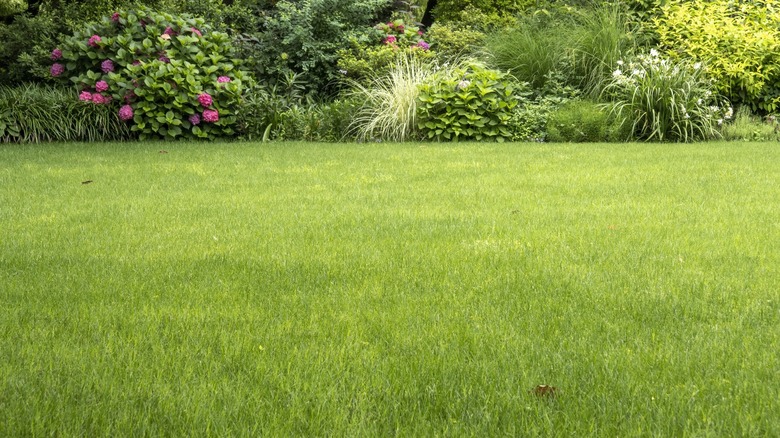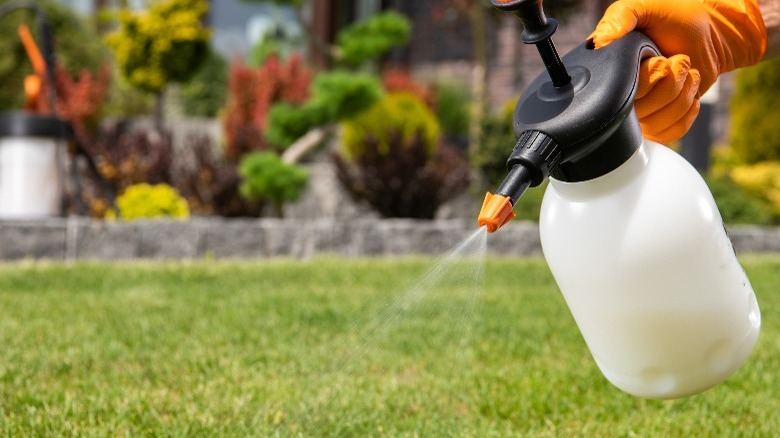How Often You Should Be Spraying Your Lawn With Neem Oil (& Why You'd Want To)
Managing the health of your lawn can be an all-consuming task at the best of times. Throw in some pest issues, and you might want to give up altogether. A simple addition to your lawncare routine can save you some stress when paired with other ways to grow a healthy lawn without chemicals. When sprayed on the lawn at certain intervals, neem oil provides curative and preventative benefits to turfgrass. Most recommendations suggest spraying neem oil frequently for best results. If you have an active issue with pests or disease, neem oil should be applied more regularly — as often as every week. But for preventative measures, you can use neem oil every 2 weeks for results.
It's not a great idea to rely too heavily on chemical pesticides for your lawn. Thankfully, neem oil offers a more natural approach to pest control because it's considered a biorational pesticide. It occurs naturally in nature and poses a low environmental risk. For many hundreds of years, it has been the go-to protection from pesky bugs and fungus. Besides turfgrass, people use neem oil in the garden and apply neem oil on their houseplants. Adding a neem oil treatment to your lawn care doesn't require complicated tools, just a garden sprayer for all-over application. Both concentrated and pure neem oil should be diluted in water before application (one-third cup for every gallon for 2% pure neem) and used immediately for best results. However, this oil can burn plants and should not be used during extreme temperatures or the sunniest part of the day.
Why you want to spray neem oil on your lawn
Neem oil kills and repels many annoying insects, including leafminers, thrips, caterpillars, aphids, mealybugs, and beetles. With its active ingredient, azadirachtin, neem oil targets insects before they mature. It easily handles armyworms, cutworms, and lawn moth larvae infestations by preventing insects from maturing past the caterpillar stage. Spraying neem oil on your lawn will also combat certain fungal diseases. Although it is best known for stopping the growth of dreaded powdery mildew, neem oil can be used against common turf diseases that spread via fungal spores. It is safe to spray neem oil on Kentucky bluegrass, perennial ryegrass, turf-type tall fescue, Bermuda grass, zoysia grass, and St. Augustine grass to manage the spread of snow mold, brown patch, and dollar spot.
Although neem oil targets insects that could destroy your lawn, it typically won't harm beneficial insects and is safe to use around birds and mammals. However, you should always avoid spraying on flowering plants to lessen the risk to honey bees. Neem oil also does not linger in the environment after use. The active ingredient azadirachtin might remain in the soil between 3 days and a little over a month. It breaks down on plant leaves and foilage after just a few days. When you spray neem oil as recommended on your lawn, you're choosing a simple, environmentally-conscious method to manage pests and fungal diseases.

